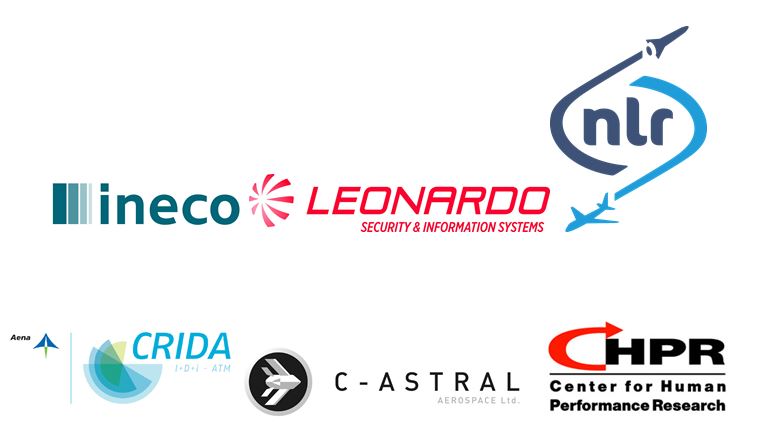The current communications, navigation and surveillance (CNS) infrastructure is designed to support the needs of manned aviation. The requirements of the emerging drone sector are different and will rely on new and existing technologies to perform effectively. The TERRA project set out to identify relevant ground technologies and to propose a technical ground architecture to support drone operations. TERRA started by defining the performance and functional requirements of ground based systems for drones, analysing in particular the strengths and weaknesses of CNS technologies to support safe, effective and efficient very low-level operations. Three business cases were selected - agriculture, infrastructure inspection and urban delivery – and small-scale trials were conducted using new and existing technologies. A qualitative evaluation was performed for all the presented technologies using a set of performance characteristics, together with an assessment of their pros and cons for drone operations. Additional work was carried out to assess whether machine learning can help monitor very-low-level operations, including early detection of off-nominal conditions such as trajectory deviations. The research considered different sizes and types of drones operating visual and beyond visual line of sight, in urban and rural environments. In terms of the applicability of technologies, the research examined continuity of service, coverage, data security, bandwidth, latency, update rate, integrity and availability. The research also applied artificial neural network (ANN) modelling to demonstrate successful conflict prediction in urban environments and used rule-based reinforcement learning to mitigate against frequent follow-on conflicts with other traffic. The analysis showed that machine learned application of traffic rules performed relatively well under higher traffic densities. TERRA concluded that in environments with a low density of drones and a low level of complexity the current CNS technologies are sufficient to support U-space services. However, existing technologies present some drawbacks, which limit their application for complex scenarios such as urban environments and high drone densities. To allow full U-space deployment, improved technologies are required. These include making use of 5G wireless communications, technologies enabled by Galileo and EGNOS such as augmented satellite positioning data, to cover gaps. Additionally, artificial neural networks modelling has shown the potential benefits of machine learning for use in predicting and classifying drone trajectories in the urban scenarios.

Exploratory research PROJECT
Technological European Research for RPAS in ATM - TERRA
In short
|
|
|
|---|---|
|
PROJECT ID
|
TERRA
|
|
PROJECT TYPE
|
Exploratory research |
|
FLAGSHIP
|
Not applicable
|
|
STATUS
|
Completed |
|
SESAR PROGRAMME
|
SESAR 2020
|
|
PROJECT DURATION
|
2017-10-01 > 2020-02-29 |
|
TOTAL COST
|
EUR 937 000
|
|
EU CONTR.
|
EUR 937 000
|
|
GRANT ID
|
763831
|
|
PARTICIPANTS
|
Ingenieria Y Economia Del Transporte, Leonardo, Stichting Koninklijk Nederlands Lucht - En Ruimtevaartcentrum, Centro De Referencia Investigacion Desarrollo E Innovacion ATM (CRIDA), C-Astral Aerospace, Center for Human Performance Research |
U-space relies on existing and new ground infrastructure technologies
The current communications, navigation and surveillance (CNS) infrastructure is designed to support the needs of manned aviation. The requirements of the emerging drone sector are different and will rely on new and existing technologies to perform effectively. The TERRA project set out to identify relevant ground technologies and to propose a technical ground architecture to support drone operations.
TERRA started by defining the performance and functional requirements of ground- based systems for drones, analysing in particular the strengths and weaknesses of CNS technologies to support safe, effective and efficient very low-level operations. Three business cases were selected - agriculture, infrastructure inspection and urban delivery – and small-scale trials were conducted using new and existing technologies. A qualitative evaluation was performed for all the presented technologies using a set of performance characteristics, together with an assessment of their pros and cons for drone operations. Additional work was carried out to assess whether machine learning can help monitor very-low-level operations, including early detection of off-nominal conditions such as trajectory deviations.
The research considered different sizes and types of drones operating visual and beyond visual line of sight, in urban and rural environments. In terms of the applicability of technologies, the research examined continuity of service, coverage, data security, bandwidth, latency, update rate, integrity and availability. The research also applied artificial neural network (ANN) modelling to demonstrate successful conflict prediction in urban environments and used rule-based reinforcement learning to mitigate against frequent follow-on conflicts with other traffic. The analysis showed that machine learned application of traffic rules performed relatively well under higher traffic densities.
TERRA concluded that in environments with a low density of drones and a low level of complexity the current CNS technologies are sufficient to support U-space services. However, existing technologies present some drawbacks, which limit their application for complex scenarios such as urban environments and high drone densities. To allow full U-space deployment, improved technologies are required.
These include making use of 5G wireless communications, technologies enabled by Galileo and EGNOS such as augmented satellite positioning data, to cover gaps. Additionally, artificial neural networks modelling has shown the potential benefits of machine learning for use in predicting and classifying drone trajectories in the urban scenarios.
Consortium


